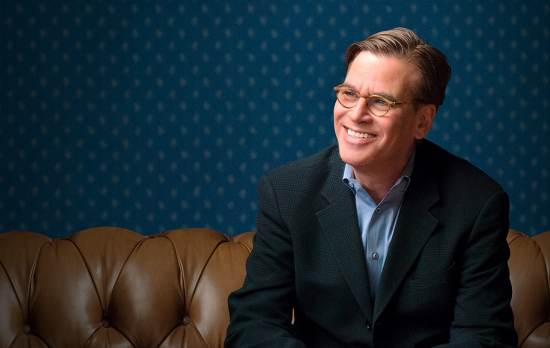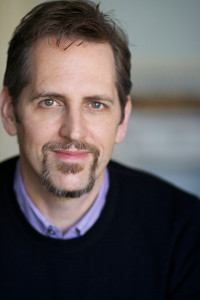Aaron Sorkin says he “worships at the altar of Intention and Obstacle.”
What does that mean? In his Masterclass he defines it as:
“Somebody wants something, and something is standing in their way of getting it.”
Sounds so simple, right? And even obvious?
It’s actually the biggest thing I find myself asking writers to do more of.
Believe it or not, most scenes in most scripts I read aren’t doing this.
Let me explain…
Certainly on the story level, you want one big “intention and obstacle.” Most get that. (I even wrote a book about the 7 elements to that PROBLEM at the heart of any good story.)
But it’s also true on the scene level. And that’s where I find things often fall apart. So many writers create so many “scenes” that aren’t focused on intention and obstacle.
I put “scenes” in quotes because I’d go so far as to say that you don’t really have a scene without that.
Oh, you might have a scene heading, such as:
INT. COFFEE SHOP – DAY
And then some description of characters doing things. And dialogue where they say things.
Final Draft will tell you that’s a scene.
But I dare say if Aaron Sorkin read it, he’d be looking for intention and obstacle.
And so would virtually any other professional reader.
Here’s what I mean:
A good scene is about a character pursuing an intention in the face of an obstacle.
That might also sound obvious, but let’s unpack what’s involved in that:
1. It’s about “a character.” Not a group of characters. (More on this later.)
2. This character has an intention or desire and the audience generally knows what that is. Otherwise they’re in the dark, on the outside, and not able to experience the scene subjectively.
3. The character actively pursues that intention. Which means they have agency, and they use it, by doing or saying whatever they think will move them toward that intention/desire being fulfilled.
4. They encounter one or more obstacles. Meaning conflict. They don’t get what they want immediately. That usually means that the plan they came to the scene with, or developed during the scene, didn’t work out how they hoped.
5. Because of this, they have to adjust their approach. To improvise. Try new things. This is what’s often missing — the battle against the obstacle that takes some time to play out because of the improvisation, approaches not working, and counter-punches from people or other opposing forces.
When I coach clients developing a scene-by-scene outline (or script), I recommend Save the Cat‘s approach of “40 scenes on a board,” only instead of a board, they’re paragraphs in a document.
Blake Snyder used 40 as a target number for a 110 page script, meaning his “scenes” average 2.75 pages each. That’s not going to happen without significant conflict in the scene, and improvisation in the face of it.
Let me correct that:
It might happen if a writer just wrote a lot of stuff that’s not about one character pursuing their intention and dealing with obstacles, but it won’t be a compelling scene.
In other words, if something low in conflict happens, like an information or opinion exchange, that’s usually less than a page. Or it should be. We almost never want to just watch people talk. About the past, present, or future. Or what they think, feel or believe. Unless it’s part of intention meeting conflict.
What we want to watch are people trying to pursue desires and solve problems. Where we understand what they’re doing and why it’s important. Where as an audience member we feel something about it. We’re emotionally invested and strongly engaged.
So yes it’s techinically a “scene” each time you have a new scene heading. By one definition of scene. You might have over 100 of them in a screenplay.
But what we’re talking about as a “scene” is a complete dramatic unit, with a beginning, middle and end. It’s like a story in miniature. First a character has (or forms) an intention. Then in the middle there’s conflict that they battle through. Then at the end the scene is resolved in some way that births the need for new scenes. There’s some sort of “turn” that ends things while also causing more to come that might not have, had this scene never happened.
Thus each scene is connected and necessary. You can’t just pull one out and not miss it.
Intention and obstacle is everything. It’s the foundation. And if every scene you write is driven by it, you’ll be so far ahead of the game.
But let me go back to something that might be bugging you. The idea that it’s about one character with their one intention. Surely some scenes are about multiple characters pursuing intentions, right?
Yes, they are, in the sense that each person (and the actor portraying them) has a want or objective. But usually the audience (i.e. reader, and writer) is more bonded with a particular character whose story we’re focused on. We’re more up to speed with their intentions, and care more about them.
The other people in the scene are functioning for us more in terms of how they figure into that main character’s intention. Are they helping? Hurting? Are they the target in some way? The person who needs convincing? (SO many scenes are about that — someone trying to convince someone of something.) They matter in some way to the main character’s intention, in any given scene.
But some of these others might be the “main characters” of their own “story” that we’re also following. In which case, a given scene might be focused on two different characters with intentions and obstacles at the same time. Usually their intentions are in conflict, and they are each other’s obstacles. And we are invested in both.
This happens a lot on series where we’ve bonded with multiple people and their stories are intertwining. Some movies operate this way, too, but many just have one main character. With one main story problem/goal. (They typically also have a B Story that has its own problem/goal that operates similarly. In other words, it’s not a story unless it’s focused on intention and obstacle. An overall intention with lots in the way of it, and scene level intentions with lots in the way of them.)
If there’s more than one main character (and thus more than one “story”), you simply multiply everything in this post by how many stories you have. And ever scene is driven, ideally, by the intention and obstacle of one of these “main characters,” who have a compelling overall problem/goal.
How many scenes can you have that aren’t driven by that? That don’t have a main character with a strong desire and difficulties that are part of their larger story objective(s)?
Ideally, zero!
Even in those little non-scenes where information is exchanged and there’s no real conflict, we’re typically developing some main character’s story, and bridging between two scenes that have their own intention and obstacle.
And 100% of the 40 scenes Save the Cat talks about will typically be laser focused on that.
And what percentage of the scenes in scripts that I read are full-on “intention/obstacle” scenes as I’m describing? With the 5 elements I listed above? Across all genres?
If I had to guess, I’d say maybe a third.
Definitely half.
Am I talking about you, and your script? Maybe take a good hard look.
It’s probably the most common and impactful practice writers have to learn.
I know it took me a long time for it to be part of my writer’s DNA, to always write that way.
And it’s one of the clearest distinctions between professional-level scripts, and all others.



Great post, thanks!
Would you agree that the urgency for this is higher between the Inciting incident and the resolution, than it is in the set-up?
Typically yes but even in the set-up it’s helpful if there’s some conflict at play and some sense of intention for the main character. They just typically don’t have a big strong intention like they might after the catalyst/inciting incident. (Although sometimes they do, like in SAVING PRIVATE RYAN!) 🙂
This is spot on talking about me! But I’ve been working on it. It’s hard work and hopefully I master it. Thank you for this article.